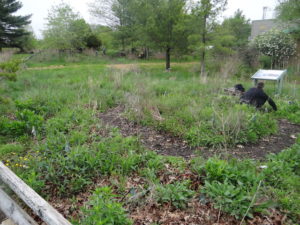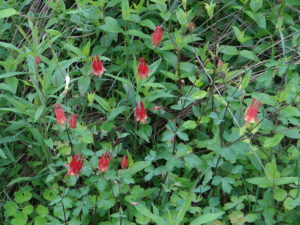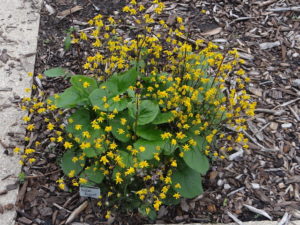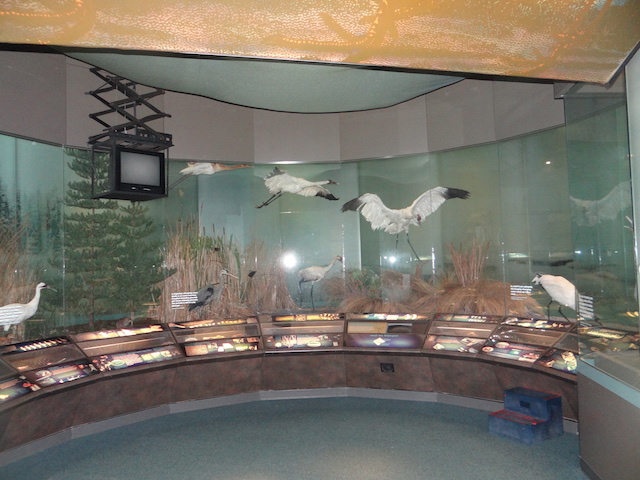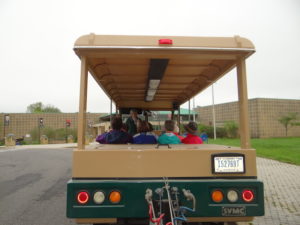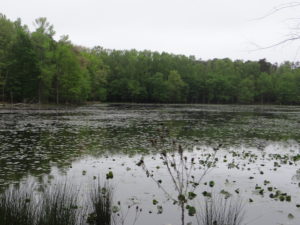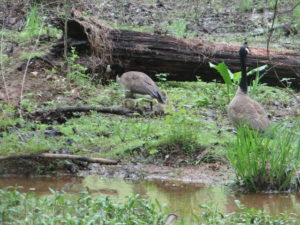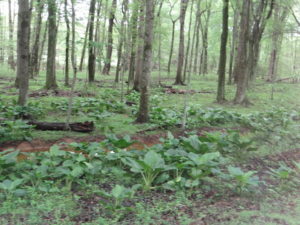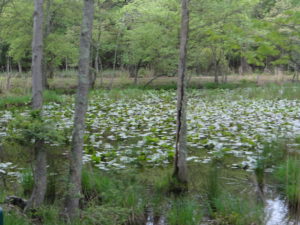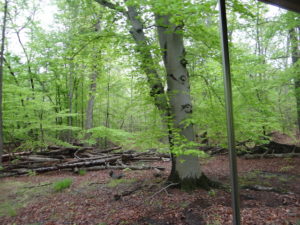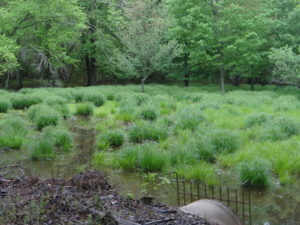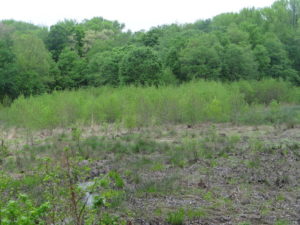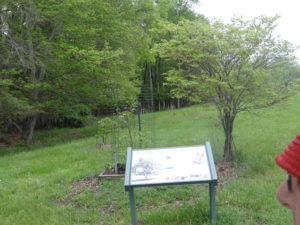We had an “away day” for our June meeting as members carpooled to the Patuxent Wildlife Research Center (PWRC) down in Laurel. Established by FDR in 1936, it is the sole national refuge specifically formed to carry on research. It is emphasized that this is not a park but a refuge where wildlife comes first. Its 12,841 acres surrounding the Patuxent and Little Patuxent Rivers are divided into three sections: North, Center and South. We were heading to the 2000 acre South Tract where the Visitor Center is located with plans to ride the tram and visit exhibits. The public is also allowed into the North Tract which has trails, hunting and fishing opportunities. Apparently many acres were added to the north portion of the refuge that were once the domains of the Departments of Agriculture and Defense (from the downsizing of Fort Meade).
The real working area is the Center Tract where the main research activity takes place; the general public is not allowed there. Scientists here have been studying and sharing information nationally about how to conserve and protect wildlife in various ways:
- land management practices
- restoration of agricultural land to wildlife habitat
- endangered species research
- captive breeding and release
- studies of the effect of pesticides, insecticides and chemicals on wildlife and ecosystems
- ways to assist and encourage wildlife by adjusting habitat ( ex. breeding island shapes)
This last point reflects back to the influence of Rachel Carson, who in the 1940’s regularly read reports about the harmful effects of DDT coming out of PWRC. Her writing of Silent Spring spread this knowledge to the public and garnered the support to ban the use of DDT. In later years, this publicization and resulting research would lead to the successful return of the Bald Eagle.
We rode the tram on a designated wide trail through a portion of the South Tract, moving mostly through forest and wetland habitats, then past a meadow area nearer to the Visitor Center. It was a grey, drizzly day with a wind that blew moisture into our faces, so we were bundled up against the chill. We did see a few geese with goslings and some bird activity as we were riding along. Our guide pointed out areas where researchers were measuring deer effect on vegetation, regeneration of open land with pioneer species of trees and shrubs, vernal pools in the woods, specially built nesting areas in the water and the names of various plants along the route. There is also an attempt to bring back the American Chestnut, with plantings not far from the Visitor Center shown to us.
Afterwards, back the Visitor Center, we watched volunteers at work in the native plant garden.
- Children were working to weed the wildflower area.
- Red Columbine-beloved of Humming Birds
- Gold Ragwort in display
We then looked over the maze of interactive exhibits inside. The exhibits cover global environmental issues, the tools an techniques used by researchers and various animals as found in specific habitats. We did note that many of the buttons on the interactive exhibits did not work properly or were delayed response, which was explained as the result of legions of school children “pounding” on them. But the visuals were quite nicely done through glass habitat enclosures. Another section of exhibits showed endangered or extinct animals.
There were a number of exhibits devoted to endangered Whooping Cranes. Apparently the PWRC has 68 of them as part of a breeding and research population to aid in their recovery. However, visitors are only allowed to see them once per year and this is probably also subject to additional restrictions.
Afterwards, we gathered in the Columbia area at Mimi’s cafe, which we all agreed was a great place to have lunch.
Here are some clickable pictures taken while on the Tram:
- The backs of some of our members on the first Tram
- Passing the first large area of water.
- Geese and their goslings-the only group we saw with young
- Many lush skunk cabbages
- We passed by many areas with lily pads on the water
- I like the branching on beech trees
- Somewhat swampy here with tussock grasses
- Sucessional forest featuring sweet gums (can handle all the moisture)
- Devoted to American Chestnut resurgence

